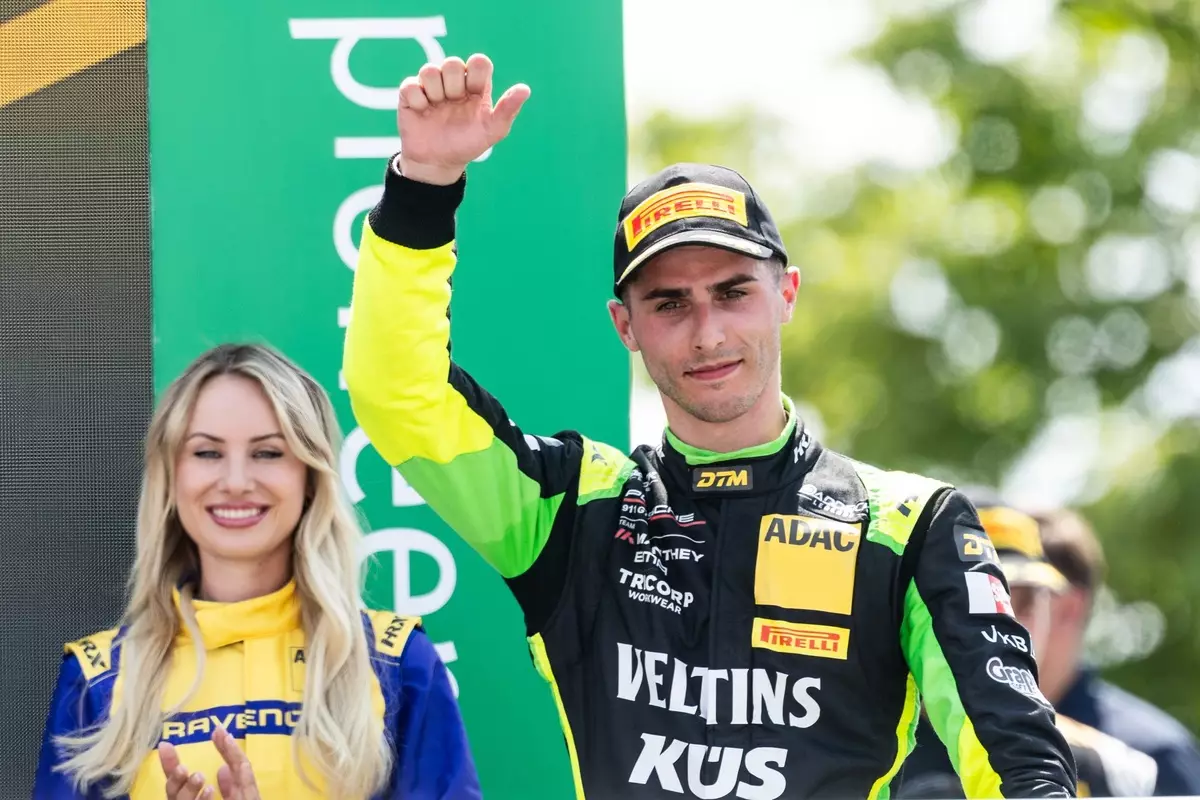In the fiercely competitive world of racing, victory often hinges on more than mere speed; it demands impeccable strategy, mental resilience, and the ability to adapt swiftly amidst chaos. The recent DTM race at Norisring demonstrated how drivers who combine technical skill with strategic foresight can seize opportunities even when starting from disadvantaged positions. Thomas Preining’s commanding win underscores the profound influence that tactical execution can have on the outcome of a high-stakes race. His journey from sixth on the grid to crossing the finish line first emphasizes that determination and planning are as vital as raw acceleration.
This race was a testament to the importance of decision-making under pressure. The initial chaos of Turn 1, which saw multiple retirements and debris, exemplifies how unpredictable elements can drastically alter race dynamics. Drivers who maintained composure and adhered to well-thought-out strategies navigated this turmoil better, ultimately gaining crucial positions. Preining’s ability to capitalize on these opportunities, especially through smart pit stops and timely overtakes, highlights the competitive edge gained through meticulous planning.
Chaos on the Track: Lessons in Adaptability and Resilience
The Norisring event was not merely a showcase of speed but also a brutal test of resilience. Early incidents, including Marco Wittmann’s BMW and the Lamborghinis of Bortolotti and Thiim, forced race officials to red-flag the competition, pausing the action to clear wreckage. This pause, along with subsequent safety car deployments, created a dynamic environment that challenged drivers’ focus and adaptability. Those who responded swiftly and adjusted their race plans effectively reaped benefits later on.
An illustrative example was the incident involving Fabio Scherer’s loose wheel and the subsequent collision between Tom Kalender and Gilles Magnus. Such incidents highlight the perilous nature of racing and the critical importance of situational awareness. Kalender’s remark about the unpredictability of race incidents—“You can’t just vanish into thin air”—reflects a core truth: racing demands a relentless mindset of caution, anticipation, and adaptability. Failing to react appropriately can eliminate even the most talented drivers.
The race’s unpredictable twists—ranging from wrecks to strategic overcuts—serve as compelling lessons in resilience. Drivers who learn to navigate setbacks, remain focused, and adapt strategies on the fly are the ones capable of transforming chaos into opportunity. Preining’s victory was not just about speed; it was about mental toughness and strategic flexibility in the face of adversity.
The Strategic Battle for Position: Overtakes and Pit Stops
A significant phase of this Norisring race involved strategic pit stops and tactical overtakes. As the leaders pitted, Preining made crucial moves that allowed him to leapfrog over competitors like Thierry Vermeulen and Jack Aitken. This underscores how crucial timing and execution are in racing—an advantage gained in the pit lane can be the key to victory on the track.
Preining’s decision to pit one lap earlier than Aitken proved decisive. A swift pit stop from Manthey’s crew allowed him to rejoin the race with fresher tires and a better position, enabling him to overtake his rival at the Dutzendteich hairpin. Such moments highlight the importance of precise communication and coordination between driver and pit crew. It’s a symphony of teamwork tuned for maximum performance under extreme pressure.
Furthermore, the race demonstrated how energy management and timing influence results. Overcutting opponents by pitting later can sometimes backfire if tire wear or traffic interference hampers performance. Conversely, an aggressive early stop, when executed with precision, can deliver a crucial edge. Preining’s strategy balanced caution with aggression, enabling him to emerge victorious.
Understanding the Human Element: Skill, Courage, and Competitive Spirit
While technical strategy plays a pivotal role, the intangible qualities of courage, skill, and competitive spirit are equally vital. Preining’s clean overtakes against fierce opponents like Jack Aitken speak to his exceptional confidence and racing intelligence. His ability to remain calm and make decisive moves under pressure differentiated him from others who faltered, especially during the latter stages of the race.
The incident on the first lap involving multiple retirements was a stark reminder of racing’s brutal reality. It brought to the forefront the importance of mental fortitude—drivers must remain focused despite setbacks and volatile race conditions. This mental resilience underpins the ability to seize fleeting opportunities and perform consistently across the race distance.
Furthermore, the competitive narrative extends beyond individual talent. Contenders like Lucas Auer, who finished eighth but maintained the lead in the championship standings, show that consistency and high-level race craft are crucial across a season. The upcoming race at Nürburgring will undoubtedly see this fierce contest continue, driven by a blend of skill, strategy, and raw determination.
In the end, racing is an intricate dance of human ingenuity and mechanical prowess. The Norisring race was a vivid illustration of how mastery over strategy and resilience amid chaos can produce a champion—not just one with speed, but one with the mindset to turn every setback into an opportunity to triumph.


Leave a Reply